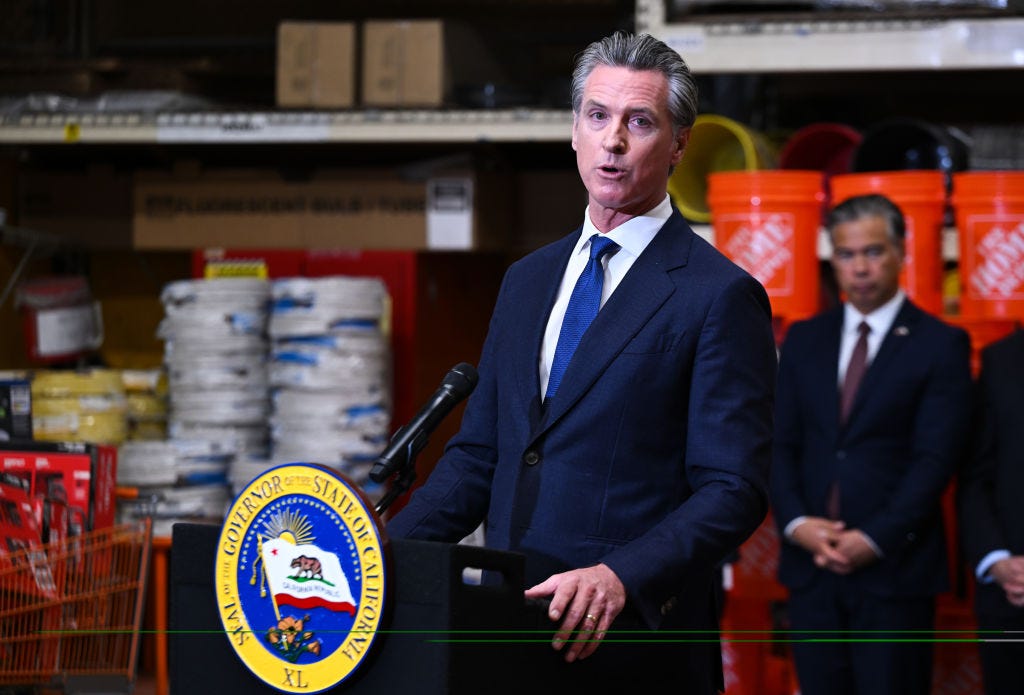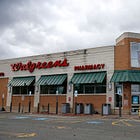California's shoplifting laws are not broken. California is "fixing" them anyway.

Last week, California Governor Gavin Newsom (D) signed a package of 10 bills intended to deter shoplifting and other property crime. Newsom called it "the most significant bipartisan legislation to crack down on property crime in modern California history." He claimed the new laws will make "communities safer… providing meaningful tools to help law enforcement arrest criminals and hold them accountable."
The bills were passed in response to a political backlash to Proposition 47, an initiative approved by California voters in 2014. Proposition 47 defined shoplifting and other non-violent crimes involving property valued under $950 as a misdemeanor. (Previously, prosecutors could charge shoplifting under $950 as either a felony or misdemeanor.) Proposition 47 was designed, in part, to address severe overcrowding in California prisons, which the United States Supreme Court ordered the state to address.
Critics of Proposition 47 claim that, over the last 10 years, the initiative has encouraged lawlessness. In a recent press conference, former President Donald Trump falsely claimed that in California, "you’re allowed to rob a store as long as it’s not more than $950." (201,724 people in California were charged with stealing property valued at less than $200 in 2023). Trump claimed Proposition 47, which he linked to Vice President Kamala Harris, "destroyed California."
Trump did not provide any data suggesting that property crime has increased since the passage of Proposition 47. And neither did Newsom's press release. Rather, Newsom's release notes that "California’s crime rate remains near historic lows."
Newsom is correct. An analysis published this month by the California Budget and Policy Center, a research non-profit, shows a dramatic decline in property crime in California since its peak in 1980. That trend has continued since the passage of Proposition 47 in 2014.
There is also no evidence that Proposition 47 has increased shoplifting in California. In 2013, the last full year before Proposition 47 went into effect, there were 245 shoplifting crimes per 100,000 California residents. By 2018, shoplifting in California had declined to 224 shoplifting crimes per 100,000 residents. In 2023, shoplifting in California was somewhat elevated — 292 crimes per 100,000 residents. But over the last five years, the average shoplifting rate in California was 210 crimes per 100,000 residents. The data does not support the contention that Proposition 47 increased shoplifting in the state.
Much of the increased concern about shoplifting appears to be driven by media coverage. For example, a study by the Council on Criminal Justice found that "the number of news stories covering smash-and-grab incidents nearly doubled." But there is no evidence that smash-and-grab incidents increased during that time. The number of shoplifting cases involving vandalism remained rare — about one out of every 200 incidents.
Retailers have also contributed to the perception that shoplifting is increasing in California. In 2021, Walgreens closed five stores in San Francisco, blaming theft. The data did not support that claim. In January 2023, Walgreens' Chief Financial Officer admitted the company "cried too much" about shoplifting and was actually "quite happy " with the level of "shrink" at its stores. Shrink is an industry term that aggregates losses from theft, damage, and administrative errors.
Nevertheless, Newsom signed legislation that would subject people convicted of petty theft to more incarceration. Most significantly, the legislation would allow prosecutors to aggregate multiple instances of petty theft to meet the $950 threshold and seek a felony conviction.
Trump and other critics of Proposition 47 characterize it as a radical far-left experiment. But increasing the threshold for felony shoplifting to $950 is not an extreme policy. In South Carolina, for example, theft can only be prosecuted as a felony if the value of the stolen property exceeds $2,000. In Texas, a state that is not typically considered "soft on crime," the threshold is $2,500.
What is Proposition 36?
One reason Newsom and other Democratic leaders in California felt compelled to pass new crime legislation was to blunt momentum for Proposition 36, which would repeal even more of Proposition 47's reforms. If approved in November, Proposition 36 would allow petty theft of under $950 to be prosecuted as a felony if the offender has two or more past convictions and adds additional prison time for retail theft committed with two or more other people. It would also allow the prosecution of drug possession as a felony for individuals with two prior convictions.
Californians for Safer Communities, the primary group supporting Proposition 36, boasts many endorsements from neighborhood businesses and local officials. But much of the funding for the group has come from national big-box retailers. Target, Walmart, and Home Depot donated $3 million collectively. (Newsom signed the new anti-shoplifting laws at a Home Depot in San Jose.)
Most of that cash, however, was spent collecting signatures. As of the end of June, the group had only about $100,000 cash on hand. A recent poll found 56% of Californians supported Proposition 36. But successful ballot initiatives generally require tens of millions of dollars. The large retailers have not indicated whether they would continue to back Proposition 36.
The impact of rolling back Proposition 47
Some of the money saved from a reduced prison population after the passage of Proposition 47 — nearly $100 million annually — was redirected to fund drug treatment, mental health, and reentry programs. Only 15.3 percent of participants in these programs were convicted of a new felony or misdemeanor, according to a report by the California Board of Corrections. This is far lower than California's overall criminal recidivism rate of 35-45%.
Proposition 36 could cost "hundreds of millions of dollars each year" due to an increased prison population, according to the California Legislature's non-partisan Legislative Analyst's office. By increasing costs, it could dramatically reduce the funds available for the programs funded by Proposition 47.
Further, by sending more people to jail for longer periods of time, Proposition 36 would likely increase recidivism among shoplifters. Incarceration can protect the public from truly dangerous people. But sending more non-violent offenders to prison for longer periods of time — while draining funding for rehabilitation — will likely be counterproductive.




Big stores want people to think higher prices are due to petty theft, so they won't notice the large element of corporate greed. MAGA Republicans push fear and chaos to manipulate voters. But wtf is Newsom going along with the con?
So, why do the media and the Republicans demand the dramatic displays of crime? Entertainment? Fomenting fear so that Republican politicians can be elected and come to our rescue? Instead, we are learning that crime is down in all areas: from immigrants, from border towns, from inner cities, from large cities governed by Democrats! Thanks to Judd and team we learn about these statistics.
Here's what IS important: "Some of the money saved from a reduced prison population after the passage of Proposition 47 — nearly $100 million annually — was redirected to fund drug treatment, mental health, and reentry programs." Loss of these funds which bring down recidivism rates would be a problem.